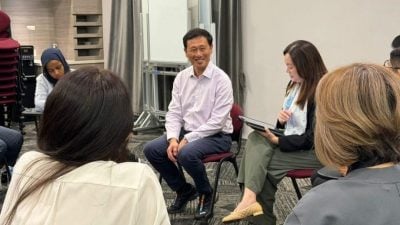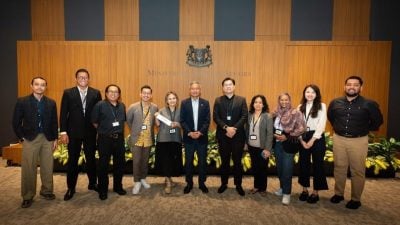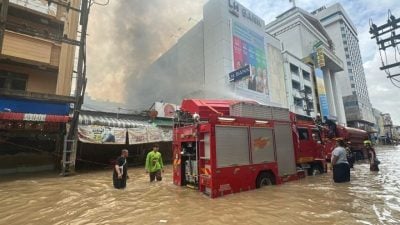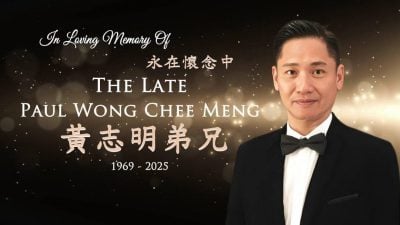By Lee San
Officially granted city status in 2005, Miri is a beautiful city flanked by rolling hills and crystal clear sea, and is endowed with a wealth of natural resources for its 350,000 lucky inhabitants.
On the day of arrival, we were lucky to have the city's wonderful mayor Mr Adam Yii Siew Sang welcoming the group of 32 of us at Yi Hah Hai Seafood Restaurant. Like an energetic tourism salesperson, he started giving us a round-up of Miri and Sarawak: there are 28 indigenous groups in the state, indisputably the most ethnically diverse state in the country. The perfectly harmonious multiracial lifestyle here is itself a subject of study! Moving around the 4,707 square km city is like wandering into the indescribable marvels of Mini Sarawak.
As a matter of fact, the moment we touched down at Miri airport and stepped out of the airplane, we were instantly bedazzled by the unique characteristics of varying skin colors among the staff at the airport terminal. Apparently the airport's team was made up of people from different ethnicities. Out of a curiosity deeply embedded in my career instinct, I decided to study this place from the perspectives of ethnology with the objective of more precisely defining "Sarawakian".
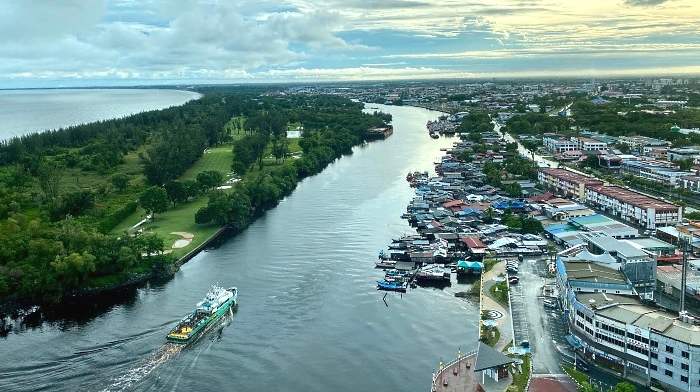
Coincidentally, the mayor also made mention of the Ibans, Bidayuhs, Melanaus, Orang Ulus, etc. and all the wonderful things about these major indigenous groups in Miri. How fascinating to have Miri and Mulu Caves on our second leg of "Cuti-Cuti" series in support of support local tourism, and for us to begin our exploration with indigenous culture as mainstay.
And since we had to start with "people", we couldn't afford to shun the history and culture of the 600km long Miri River as we traced the origins and civilization of this city step by step before venturing into the local lifestyles, culinary treats and harmonious coexistence between the local people and Nature.
Miri is separated from Kuala Lumpur 1,374km away by the busy South China Sea. Not really that far apart geographically, the two cities nevertheless appear to have been segregated by some kind of inexplicable force. It is understandable why West Malaysians are generally unable to find a valid reason to visit Miri on the far side of the nation. I hope the lovely people in Miri will not take my silly comment so seriously. Perhaps the breathtaking beauty of this city has yet to be fully discovered and appreciated? I think the people here still prefer the serenity and peace undisturbed by rowdy visitors!
I told the mayor I loved the city's cleanliness and orderliness, as well as its many seahorse sculptures which entrenched my feelings of the city's diverse social legacy, unparalleled harmony and "soft power". Unfortunately, such admirable inter-ethnic congruence has gradually thinned out in many West Malaysian cities and towns. The genuineness of East Malaysians remains largely unscathed through the years, still very much mindful about the varied lifestyles of its ethnically diverse population. Call that the reason or untapped secret of humanistic tourism!

It was in Miri that I rediscovered my most unpretentious passion. I'm sure you will instantly fall in love with this modest city like me. Additionally, you may also crave for the unmistakable flavors and smells of Sarawak laksa imbued with an aromatic mix of herbs, the kolo mee undarkened by soy sauce yet boasting enriched levels of irresistible flavors. Feeling hungry now?
Against the backdrop of a stagnant tourist industry. I had the spontaneous feeling that both Miri and Sarawak authorities had been working very hard to boost local tourism ever since the start of RMCO.
Outside the Miri airport, we were flattered to have Sarawak assistant minister for tourism, arts and culture Datuk Sebastian Ting Chiew Yew waiting for us, the first group to return to the state after the lockdown. Notably, the assistant minister came all alone without the usual pomp and lavishness but only heartfelt hospitality. He thanked us profusely for making the effort to support domestic tourism. His sincerity should inspire relevant authorities over here in West Malaysia!
Ting was seen warmly greeting local tourist guides and taxi drivers outside the terminal building. By contrast, our much bigger and resourceful team at the federal tourism ministry is hardly seen going down to the field to show its solidarity with us travel business operators!
Although our world will no longer be the same again after the pandemic, we can actually attune ourselves to the altered environment and discover a new way out that suits us best.
Miri has never been known as a first- or even second-tier tourist city in the first place, but during this trip I saw how the mayor of Miri and state assistant minister stepping out of their cozy offices to the frontline had through their enthusiasm breathed a new lease of life into the tourist industry of Sarawak,
P/S: From Miri, we made a date with million years old Mulu and Niah caves! Join us in the adventure!
(Lee San is Founder and Group Executive Chairman of Apple Vacations. He has traveled to 132 countries, six continents, and enjoys sharing his travel stories and insights. He has also authored five books.)
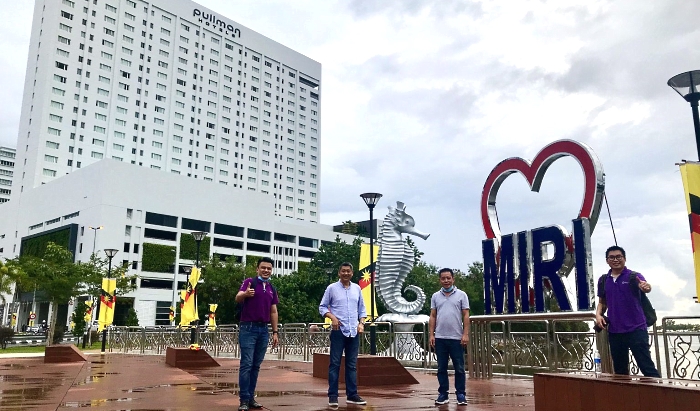
ADVERTISEMENT
ADVERTISEMENT






